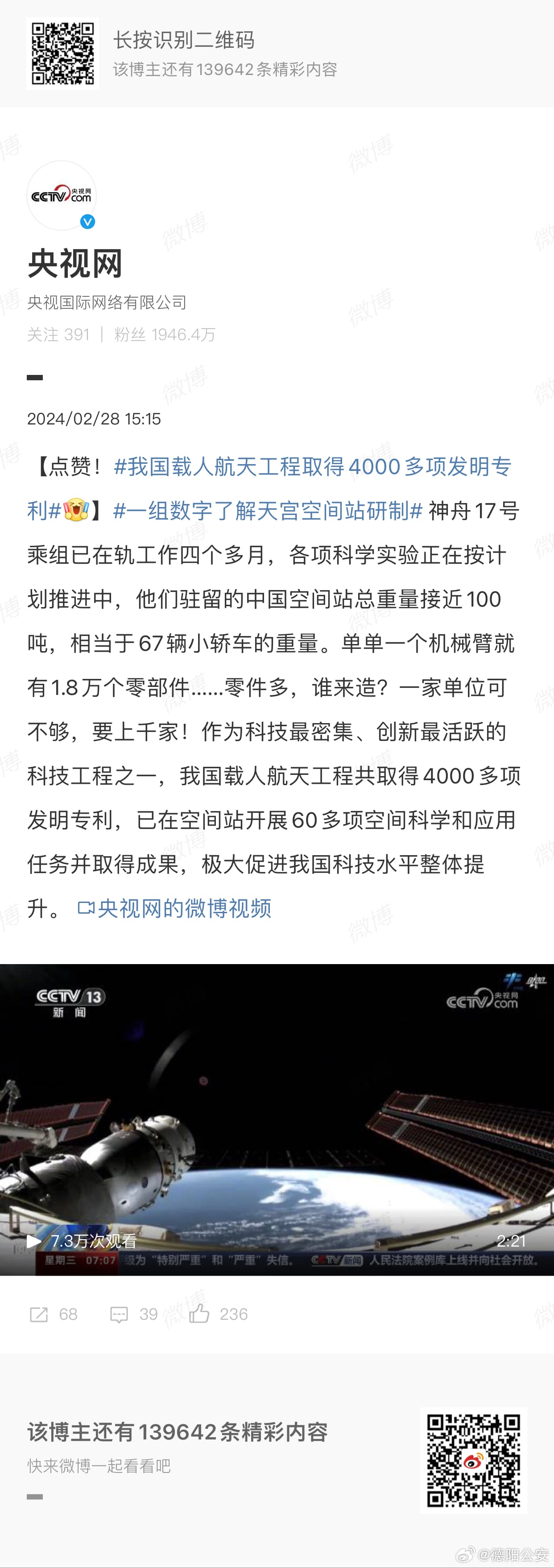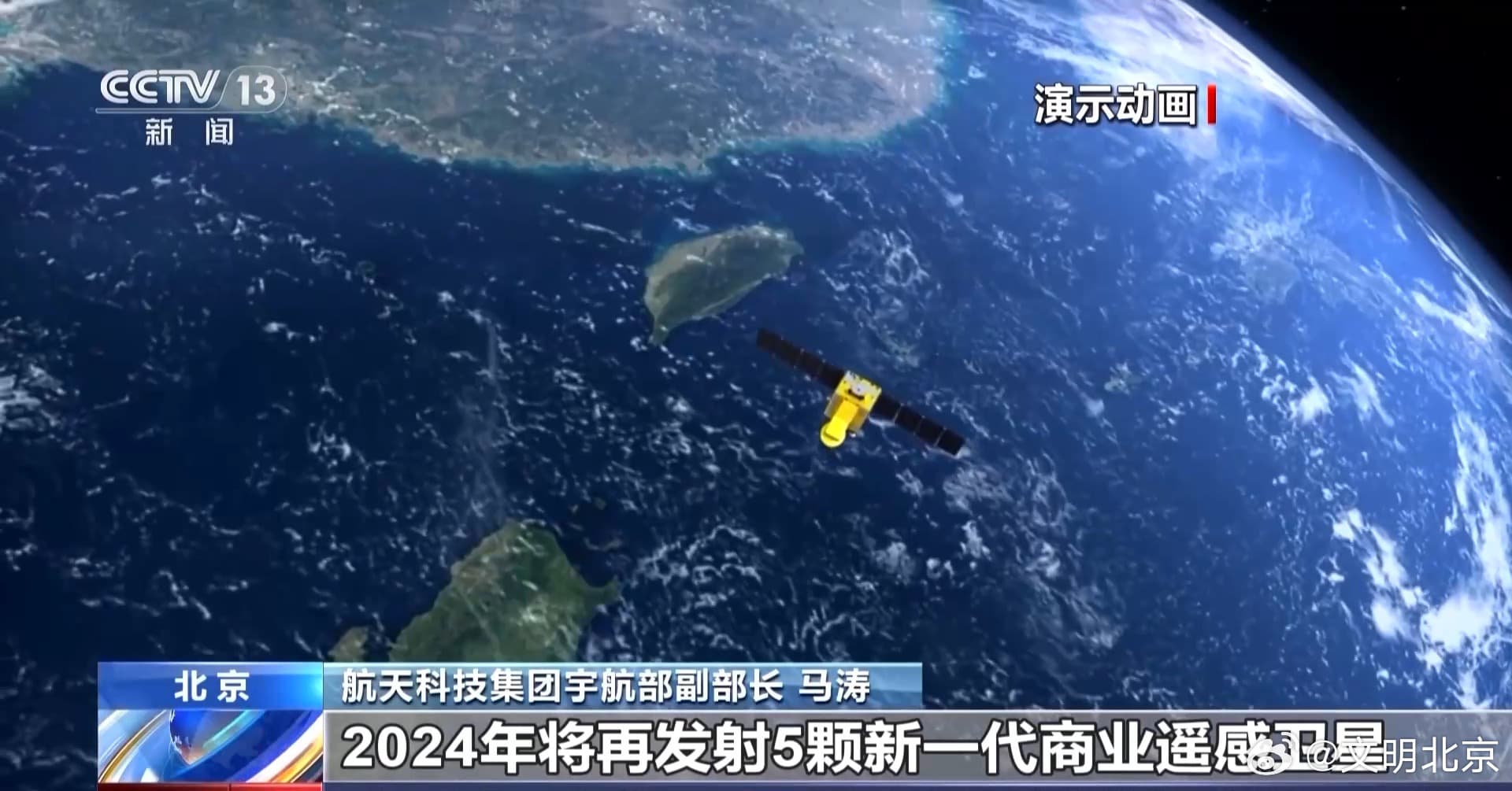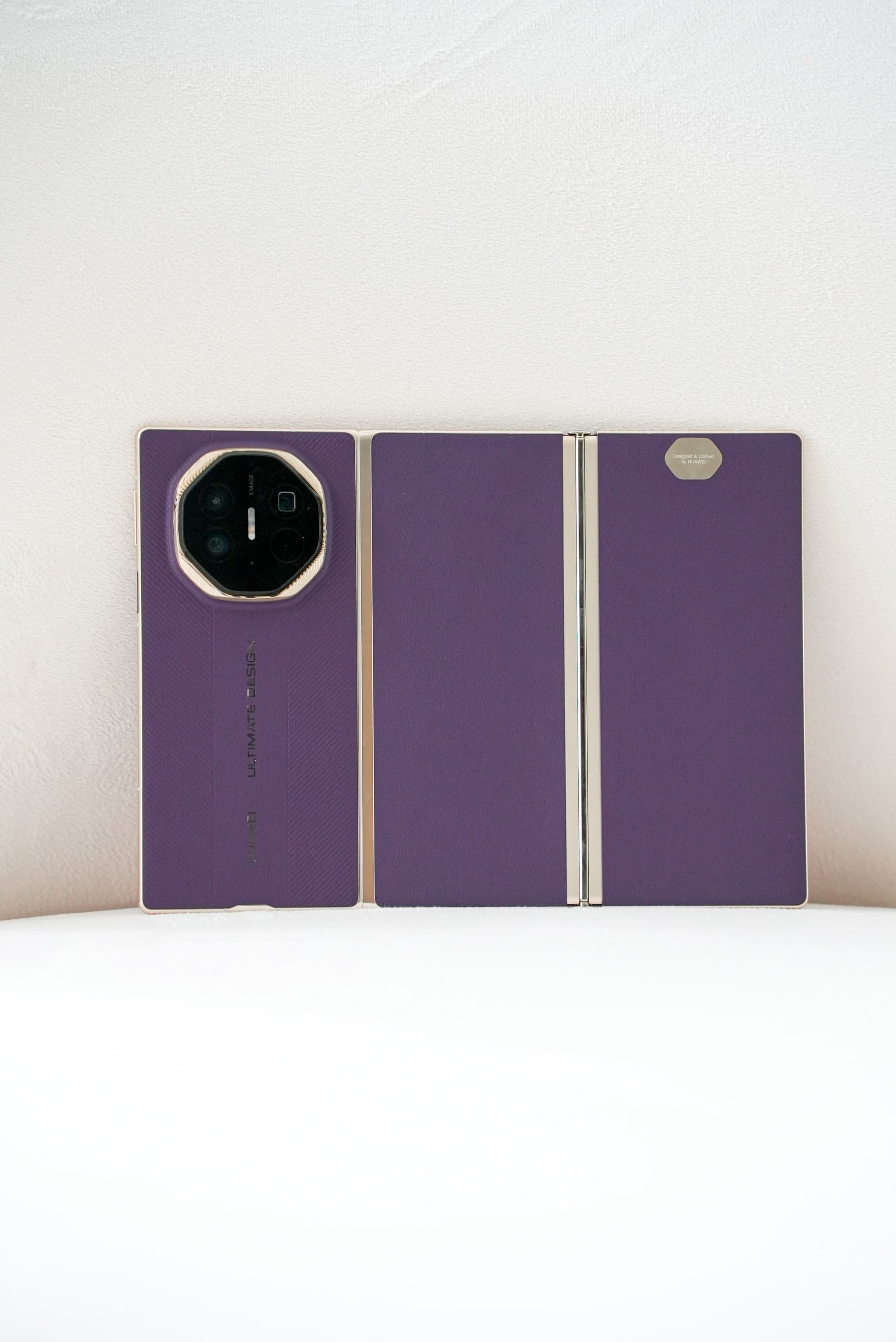China's Space Program Soars with Over 4,000 Patented Inventions
Title: Chinese Space Station Takes Off with Over 4,000 Patented Inventions China has made remarkable progress in its space program, with news of the Shenzhou 17 crew having been in space for over four months as they continue to advance scientific experiments according to schedule. The inhabited Chinese Space Station has a total weight approaching 100 tons, equivalent to 67 small cars. Even just one robotic arm comprises 180,000 individual parts - raising the question, who can manufacture all these components? A single factory would not be sufficient; it would require over a thousand. As a highly concentrated and innovative tech project, China's manned space program has secured more than 4,000 patented inventions. Scientific and applied tasks have been initiated on the space station, resulting in several achievements that have significantly boosted China's overall technological capabilities. For instance, Wang Yongzhi, who at 60 years old was appointed the first chief designer for China's manned space program, Huang Chunping, at 54, now serves as the chief commander for the Long March 2F rocket, and Liu Zhucheng, at 53, is the chief designer for the rocket. These individuals represent the diverse team of researchers, engineers, and astronauts who have played a significant role in the development of China's space program.

29 February 2024
Netizens on Weibo, China's version of Twitter, have reacted diversely to this news. Some have expressed their pride in the progress made by their country. "@user" said, "Truly amazing, our nation progresses at an incredible speed." However, a few commentators questioned the importance of these achievements in comparison to everyday income. "@user" commented, "For someone earning a monthly salary of 3,000 RMB, what's the point? If it were the U.S., they would be saying, 'Look at the U.S., the world's number one, we need to close the gap'". Despite a few skeptical voices, the majority are proud of the progress China has made in its space program. Meanwhile, "@user" looked forward to future plans, asking, "What will China's space program accomplish this year?" China's space program is not just about technological advancements, but also about inspiring the younger generation.
The "Little Astronaut Office" series of books, for example, weaves 200 pieces of space knowledge into humorous stories, linking everyday life with space exploration, and sparking children's interest in the field. The news of these achievements has been widely shared on Weibo, CCTV, the central state television broadcaster in China, has also reported on this story. These advancements in China's space program don't go unnoticed. "@user" praised the researchers and engineers behind the program, saying, "Kudos to everyone involved in the development of China's space program." As China continues to invest heavily in its space program, it serves as an example of what can be achieved with dedication, talent, and resources. This latest news about the Shenzhou 17 crew and the progress made in China's space program highlights the country's determination to push the boundaries of scientific understanding and technological innovation. With over 4,000 patented inventions, China's manned space program is not just a testament to its scientific prowess, but also a reflection of its ambition to be a leading global player in space exploration and technology.

Reminiscent of a quote from the late physicist Dr. Carl Sagan - "Exploration is in our nature. We began as wanderers, and we are wanderers still," China's robust space program indeed reflects our inherent desire as humans to explore, innovate, and reach new heights, both figuratively and literally. As China's space program continues to make strides, it serves as an inspiration to countries around the world, proving once again that the sky, or in this case, space, is indeed the limit.

Share this article
Related Articles

Alipay Users Rush to Revoke Permissions Over Hidden Authorizations, Sparking Nationwide Privacy Debate
By Trending on Weibo
Tech
15 Sept 2025

Pinduoduo’s “Journey to the West” Campaign Delivers Free Shipping to China’s Remote Western Provinces.
By Trending on Weibo
Tech
12 Sept 2025

Apple’s iPhone 17 Pro Camera Ignites an Industry Arms Race, Democratizes Visual Storytelling, and Fuels Privacy Debate.
By Trending on Weibo
Tech
12 Sept 2025

Huawei Launches World’s First Mass‑Produced Tri‑Fold Smartphone, the Mate XT, Sparking a Premium Market Shake‑Up
By Trending on Weibo
Tech
12 Sept 2025

Jackson Wang Films “Let Loose” Music Video Entirely on Apple’s iPhone 17 Pro, Highlighting Mobile Filmmaking Power】
By Trending on Weibo
Tech
11 Sept 2025